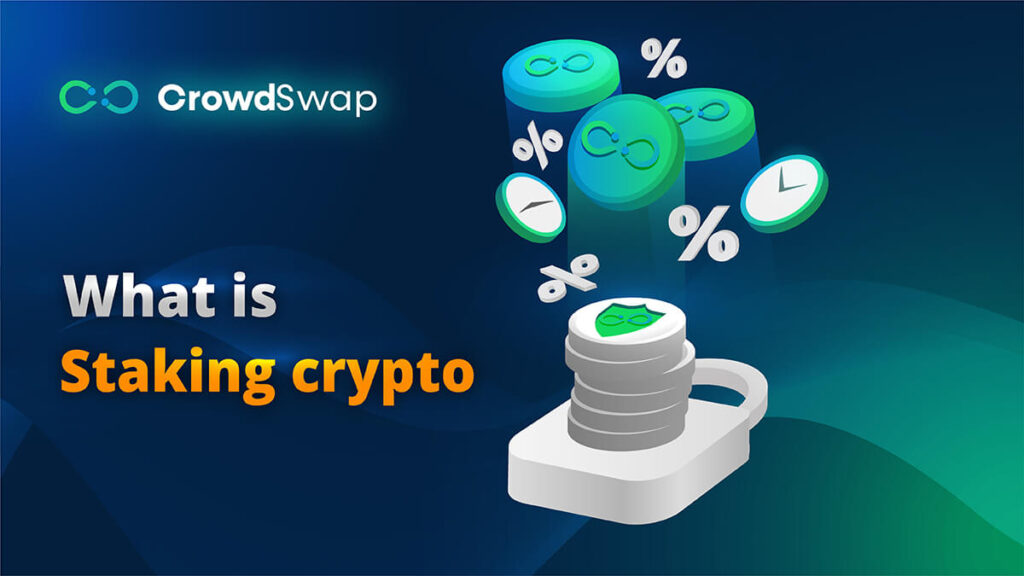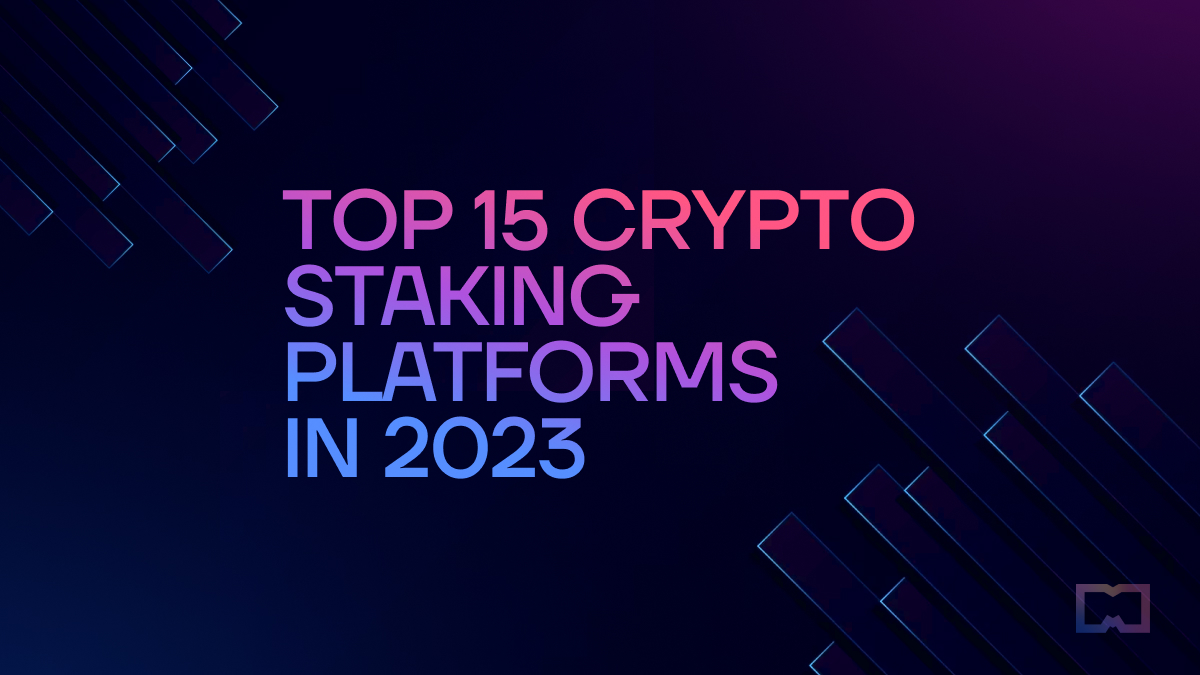When it comes to investing in the crypto market, there are various options available for individuals to explore. Two popular investment options are staking and crypto lending, but it can be challenging to determine which option is the right one for you. Understanding the differences and benefits of each option is important to make an informed decision.
Staking is a mechanism used by blockchain platforms to show their partners that they have a certain interest and responsibility in the platform. Validators, also known as stakers, lock up their cryptocurrencies to support the platform’s operations and earn passive income in return. This income is similar to interest earned when lending money. However, stakers have a more direct and simple role in the platform, as they do not have to deal with the complexities of lending.
Crypto lending, on the other hand, involves lending your cryptocurrencies to a third party, such as a platform or an individual, in exchange for interest payments. The lending platforms act as intermediaries between the lenders and borrowers, ensuring that the lending process is secure and that the borrowers are responsible for paying back the borrowed crypto.
One of the key differences between staking and crypto lending is the level of risk involved. While staking is generally considered a safer investment option, as it relies on the stability of the blockchain platform, crypto lending can be riskier, as it involves lending to individuals or platforms that may have a higher credit risk. It’s essential for investors to thoroughly research and assess the credibility of the lending platforms before participating in lending activities.
Overall, both staking and crypto lending have their pros and cons. Staking offers a more stable and predictable income, while lending can potentially generate higher returns. The choice between the two depends on the investor’s risk tolerance, knowledge of the market, and financial goals. It’s important to carefully compare the different types of staking and lending platforms available, and to consider factors such as interest rates, platform security, and the reputation of the platforms. By doing so, investors can make the best decision that aligns with their investment goals and risk profile.
Staking vs Crypto Lending

When it comes to investing in cryptocurrency, there are a few different options to consider. Two popular choices are staking and crypto lending. Both offer the potential for earning cash, but they involve different processes and risks.
Staking

Staking involves holding a certain amount of a cryptocurrency in a digital wallet for a specified period of time. This helps to secure the network and validate transactions. In return, stakers are rewarded with additional coins or tokens.
– Staking is a smart option for those who believe in the long-term potential of a specific cryptocurrency. It allows you to earn passive income while holding onto your coins and participating in the network.
– However, staking can be risky, especially if the value of the staked coins decreases significantly. Staking involves locking up your coins, which means you may be unable to sell them during a period of price consolidation or decline.
Crypto Lending

Crypto lending involves lending your cryptocurrency to others in exchange for interest payments. This can be done through lending platforms or peer-to-peer lending networks.
– Crypto lending can be a higher-risk option compared to staking, as there is the possibility of not receiving full repayment of the loan. It’s important to carefully consider the credibility and track record of the borrower before lending your coins.
– On the other hand, crypto lending can offer higher interest rates than traditional banks or lending institutions. This can be appealing for those looking to maximize their returns.
Overall, the choice between staking and crypto lending depends on your risk tolerance, understanding of the market, and investment goals. Staking is generally considered a safer option, as it doesn’t involve lending your coins to others, but it comes with its own set of risks. Crypto lending can be more lucrative, but it carries a higher level of risk and requires careful research and due diligence.
Investment Options Comparison
When it comes to choosing an investment option, it’s important to understand the differences between staking and crypto lending. Staking is a simple way to earn passive income by holding a certain amount of a particular coin on a blockchain network. For example, if you stake 100 coins and the price of the coin increases, you will earn a percentage of the additional value.
Crypto lending, on the other hand, involves using your cryptocurrency as collateral to borrow money or other assets. This allows you to earn interest on your crypto holdings, which can be a good way to earn additional income. However, there are issues of privacy and risk associated with lending, as you’re essentially entrusting your assets to a third party.
The best investment option for you depends on your personal financial goals and risk tolerance. Staking offers a more independent and decentralized way to earn passive income, while crypto lending provides a higher potential return, but with additional risks. It’s important to research and compare the pros and cons of each option in order to make the best decision for your investment strategy.
One of the main differences between staking and crypto lending is the way in which you earn income. With staking, you earn rewards based on the number of coins you hold and the interest rates set by the network. Crypto lending, on the other hand, allows you to earn interest on your loan by lending your assets to others.
Another difference is the level of risk involved. Staking carries a lower risk because you are essentially holding onto your assets and earning rewards based on the performance of the network. Crypto lending, on the other hand, involves the risk of default by the borrower, as well as potential loss of your collateral in case of a market downturn.
In terms of privacy, staking offers more anonymity as you don’t need to disclose your identity to the network. Crypto lending, on the other hand, may require you to go through a KYC (know your customer) process to comply with regulatory requirements.
Overall, staking and crypto lending can both be viable investment options, depending on your financial goals and risk tolerance. It’s important to carefully consider the potential rewards and risks associated with each option before making a decision. Whether you choose to stake your coins or lend them out, diversifying your investments is always a good strategy.
Expected Returns and Risks
When it comes to staking and crypto lending, there are different expected returns and risks associated with each investment option.
Staking
Staking allows individuals to earn passive income by holding, or “staking,” certain cryptocurrencies in a digital wallet. The expected returns from staking depend on various factors, such as the specific cryptocurrency being staked, the staking reward percentage, and the overall price movement of the cryptocurrency. It is important to consider that staking returns are not guaranteed, and the value of the staked coins can fluctuate.
However, staking also comes with risks. One risk to consider is the potential loss of the staked coins if the network or the specific cryptocurrency experiences a security breach or a hack. Staking also exposes individuals to the risk of technological issues or bugs in the staking mechanism, which could freeze or lock the staked coins temporarily or permanently.
Crypto Lending
Crypto lending allows individuals to earn interest by lending their cryptocurrencies to others, typically through a lending platform or company. The expected returns from crypto lending depend on various factors, such as the interest rate offered by the lending platform or company, the overall demand for lending, and the creditworthiness of the borrower.
However, crypto lending also comes with risks. One risk to consider is the potential default or non-payment by the borrower, which can result in a loss of the lent coins. There is also the risk of theft or loss of the lent coins due to security breaches or hacking incidents. Additionally, lending platforms may have their own terms and conditions, which could lead to disputes or issues if not carefully reviewed and followed.
Overall, both staking and crypto lending offer potential returns, but they also come with their own risks. It is important for individuals to carefully consider their personal risk tolerance, investment goals, and the specific details of each staking or lending opportunity before deciding which investment option is better suited for them.
Staking Benefits and Drawbacks
Staking is a popular investment option in the cryptocurrency world, offering several benefits and drawbacks for investors.
Benefits of Staking
- Earning Passive Income: Staking allows you to earn passive income by holding and staking cryptocurrencies in your wallet. This is especially beneficial if you believe in the long-term potential of the cryptocurrency you are staking.
- Liquidity: Staking provides a more liquid investment option compared to other forms of investment, such as crypto lending. With staking, you can easily withdraw your staked cryptocurrencies and use them as you please.
- Lower Risks: Staking is considered less risky than trading or mining cryptocurrencies. Staking does not require expensive hardware or continuous monitoring of the market, reducing the risks associated with these activities.
- Proof-of-Stake: Staking is based on the proof-of-stake consensus mechanism, which is more energy-efficient and environmentally friendly compared to the proof-of-work mechanism used in mining.
Drawbacks of Staking
- Price Volatility: Cryptocurrencies are known for their price volatility, and staked cryptocurrencies are not exempt from this. The value of your staked coins may fluctuate, potentially leading to losses if the price of the cryptocurrency drops significantly.
- Limited Control: When staking, you are essentially entrusting your cryptocurrency to a third party, such as a staking service provider or a staking pool. This means you have limited control over your staked coins and rely on the service provider’s performance and security measures.
- Illiquidity: While staking provides liquidity compared to some other investment options, it is still not as liquid as traditional assets like stocks or cash. With staking, you may face a certain lock-up period before being able to withdraw your staked coins.
- Interest Rates: The interest rates offered for staking can vary widely depending on the cryptocurrency and the staking platform. It’s important to research and compare different platforms to ensure you are earning a competitive rate.
Overall, staking can be a good investment option for those looking to earn passive income and support the growth of a cryptocurrency they believe in. However, it’s important to understand the risks and limitations associated with staking before making any investment decisions.
Crypto Lending Advantages and Disadvantages
Crypto lending offers several advantages for investors. One of the main advantages is the ability to earn passive income by lending their cryptocurrencies to others. This can be done through various platforms and exchanges that facilitate lending transactions. Additionally, crypto lending offers a way for holders to earn interest on their digital assets, which can be a lucrative option in a market where traditional financial instruments have low interest rates.
However, there are also disadvantages to crypto lending that investors should consider. One of the main concerns is the risk associated with lending their digital assets to others. Since cryptocurrencies are still a relatively new and volatile asset class, there is a risk of default or loss of funds. In addition, the regulatory environment around crypto lending is still evolving, which means that there is a lack of legal protections for lenders. This can make it difficult to recover funds in case of fraud or theft.
Another disadvantage of crypto lending is the lack of privacy. When lending cryptocurrencies, investors may need to disclose personal information to the lending platform, which can compromise their privacy. This is a concern for individuals who prioritize anonymity and security. Additionally, there is a risk of hacking or cyber attacks on lending platforms, which can lead to the loss of funds.
Before engaging in crypto lending, it is important for investors to do their research and understand the risks involved. They should carefully evaluate the credibility and security measures of the lending platform, as well as take into account factors such as interest rates and repayment terms. It may also be helpful to use a lending calculator to determine potential earnings and assess the feasibility of lending their cryptocurrencies.
In conclusion, while crypto lending can be a profitable investment option, it is important to weigh the advantages and disadvantages before deciding to participate. Investors should carefully evaluate the risks involved and take steps to protect their assets and privacy. By understanding the potential pitfalls and making informed decisions, investors can potentially earn passive income through crypto lending.
Factors to Consider when Choosing
When considering whether to stake or lend your crypto assets, there are several factors you should take into account:
- Rates: One of the key factors to consider is the interest rates offered by the staking or lending company. You should compare the rates between different options to see which one offers the highest potential return on your investment.
- Risk: Another important consideration is the level of risk associated with each option. Staking generally carries less risk, as it involves holding onto your coins and participating in the network validation process. On the other hand, crypto lending involves lending your coins to borrowers, which can be riskier due to the possibility of default.
- Illiquidity: Staking may involve locking up your coins for a certain period of time, which could limit your ability to access and trade them. On the other hand, crypto lending may allow for more flexibility in terms of withdrawal.
- Regulation: It’s important to consider the regulatory environment surrounding staking and lending. Some jurisdictions may have stricter regulations for these activities, which could affect your ability to participate.
- Company reputation: Evaluating the reputation of the staking or lending company is crucial. Check for reviews, ratings, and any history of problems or disputes with customers.
- Personal financial goals: Consider your own financial goals and how staking or lending aligns with them. Are you looking for short-term gains or long-term investment? Do you want to actively manage your assets or take a more passive approach?
- Company fees: Be aware of any fees or charges associated with staking or lending. Some platforms may charge an annual fee for staking, while others may take a percentage of the interest earned on lending.
- Company security: Check the security measures that the staking or lending company has in place to protect your assets. Look for information on encryption, multi-factor authentication, and insurance coverage.
- Customer support: Consider the level of customer support provided by the staking or lending company. You want to ensure that you can easily get assistance and have your questions answered if any issues arise.
- The fine print: Always read and understand the terms and conditions associated with staking or lending. Pay attention to details such as withdrawal limits, dispute resolution processes, and any restrictions on lending certain cryptocurrencies.
By considering these factors, you can make a more informed decision about whether staking or crypto lending is the better investment option for you.
Security and Trustworthiness
When it comes to choosing between staking and crypto lending as an investment option, security and trustworthiness are essential factors to consider. Both methods have their own risks and rewards, so it’s crucial to understand the level of security they provide before making an investment decision.
Staking is a popular method that allows individuals to earn passive income by holding and validating transactions on a blockchain network. This process makes staking a good option for those who want to support the security and decentralization of a blockchain network while also earning rewards for their participation.
Crypto lending, on the other hand, has gained significant popularity in recent years as it offers a way for individuals to earn income by lending their cryptocurrencies to others. This method can be an attractive option for those who want to earn income on their crypto assets without actively trading or investing in other cryptocurrencies.
Both staking and crypto lending rely on trust in the underlying blockchain networks and the platforms that facilitate these activities. It’s important to choose a reliable and reputable platform that has a good track record in terms of security and trustworthiness. Platforms like Celsius, BlockFi, and Nexo have established themselves as trusted names in the crypto lending space, while networks like Ethereum 2.0, Cardano, and Polkadot have gained recognition for their secure and decentralized staking mechanisms.
Before deciding which method to choose, it’s also essential to research the platform or network thoroughly. Look for information on their security features, such as encryption protocols and insurance policies. Some platforms offer insurance to protect investors’ funds, providing an extra layer of security in case of any potential breaches or unforeseen events.
In conclusion, both staking and crypto lending can be lucrative investment options, but they come with different levels of risk and reward. It’s important to weigh the security and trustworthiness of the platform or network, as well as any additional measures they have in place to protect investors’ funds. By doing thorough research and understanding the risks involved, investors can make an informed decision that aligns with their goals and risk tolerance.
Liquidity and Accessibility
When it comes to liquidity and accessibility, staking and crypto lending offer different advantages and considerations.
In terms of liquidity, staking generally provides a quicker and easier way to get your funds back. With staking, you can usually unstake your coins and receive your initial investment back in a relatively short amount of time. On the other hand, crypto lending may tie up your funds for a longer period as loans can have fixed durations, often ranging from weeks to months.
In terms of accessibility, staking can be more user-friendly and readily available. It usually does not require extensive knowledge or technical expertise and can be done via a cryptocurrency wallet or dedicated staking platform. On the other hand, crypto lending platforms may have more stringent requirements and processes to be eligible for lending and may require users to go through a verification process.
Additionally, staking is generally considered to be a more secure investment option as it involves keeping your coins within the blockchain and does not require you to transfer them to a third party. Lending, on the other hand, involves entrusting your funds with a third-party platform, which may pose risk of theft or platform issues. It is important to thoroughly research and choose a reputable lending platform.
In summary, staking offers greater liquidity and accessibility, making it a preferred option for those who want a simple and straightforward way to earn returns. However, if you are comfortable with the risks involved in lending and are looking for potentially higher returns, then crypto lending may be a suitable option for you.
Regulatory Environment and Legal Risks
The regulatory environment and legal risks associated with staking and crypto lending differ in several ways. Staking, which involves participating in the validation process of a blockchain network by holding and locking up a certain amount of coins, is generally seen as a more decentralized option. This means that there may be fewer regulatory concerns or legal risks compared to crypto lending.
On the other hand, crypto lending platforms are still relatively new and are not yet widely endorsed or regulated by financial authorities. This lack of regulation can lead to uncertainties and potential risks for lenders and borrowers alike. It’s important for individuals looking to participate in crypto lending to thoroughly research and understand the legal and regulatory landscape of their specific jurisdiction.
When it comes to staking, the risks are generally lower as the process is simpler and there is no lending involved. Validators who stake their coins have a direct stake in the network’s security and are rewarded with a return for their contribution. However, there are still risks associated with the value of the coins being staked, as they may fluctuate in price.
With crypto lending, borrowers may face risks related to lending platforms and their security measures. There have been cases of platforms being hacked or funds being mismanaged, highlighting the importance of choosing reputable lending sites with strong security protocols in place. Additionally, personal credit score and collateral requirements may also come into play when borrowing cryptocurrencies.
In summary, both staking and crypto lending come with certain regulatory and legal risks. Staking is generally seen as a more decentralized option with potentially fewer regulatory concerns, while crypto lending platforms are still in a relatively unregulated space. It’s important for individuals to do their due diligence and thoroughly research the risks and legal landscape before deciding which investment option is right for them.
Frequently Asked Questions:
What is staking?
Staking is the process of holding and validating cryptocurrency tokens in a blockchain network to support the operations of the network. By staking their tokens, users can earn rewards in the form of additional tokens.
How does crypto lending work?
Crypto lending involves lending your cryptocurrency to other traders or investors in exchange for interest payments. It is a way to generate passive income from your crypto holdings.
Which investment option, staking or crypto lending, provides higher returns?
The returns from staking and crypto lending can vary depending on the specific cryptocurrency, but in general, staking has the potential to provide higher returns. However, it also comes with higher risks compared to crypto lending.
What are the risks associated with staking?
Staking carries the risk of slashing, which is the penalty for acting maliciously or failing to validate transactions correctly. Additionally, there is the risk of the cryptocurrency’s value decreasing, resulting in a loss of investment.
Is crypto lending a safer investment option compared to staking?
Crypto lending is often considered a safer investment option compared to staking since it involves lending your cryptocurrency to others instead of actively participating in the network. However, it is important to conduct thorough research and consider the risks associated with lending platforms.
Video:
5 Crypto Lending Platforms Compared!!


